Poem Syllable Counter & Meter Analyzer
Basic Statistics
Meter Analysis
Line-by-Line Analysis
Many poets, whether beginners or seasoned writers, often struggle with the complexities of syllable counting in their poems. The task can be time-consuming, especially when trying to maintain a specific rhythm or adhere to traditional poetic forms.
Manually counting syllables can be error-prone, leading to frustration and wasted time. Additionally, poets working on tight deadlines or those looking for a more efficient solution often find the process overwhelming.
Our Poem Syllable Counter Tool addresses these pain points by providing an easy, fast, and accurate way to count syllables in your poems, allowing you to focus more on creativity and less on tedious calculations.
With just a few clicks, this free online tool offers a comprehensive breakdown of your poem’s syllables, ensuring a seamless writing experience.
How to Count Poem Syllables Using Our Tool?
Using our Poem Syllable Counter tool is simple and fast. Here’s how you can get started:
This tool makes it easy for poets to ensure their poems are balanced, whether they’re aiming for a traditional structure like a haiku or a free verse style.
How to Count Poem Syllables Manually?
While using a tool like our syllable counter is the quickest way to count syllables, it’s valuable to understand the manual process. Here’s a simple, easy-to-follow guide for counting syllables manually in your poem, with examples for each step to make it clearer:
1. Identify the Words
The first step is to break down each word in your poem. A syllable is a single unit of sound, typically containing a vowel sound. For example:
- The word “flower” has two syllables: flow-er.
- The word “sun” has one syllable: sun.
- The word “beautiful” has three syllables: beau-ti-ful.
By identifying these vowel sounds in each word, you can begin to count the syllables. Pay attention to multi-syllable words like “impossible” (im-pos-si-ble), which has four syllables.
2. Clap or Tap for Each Syllable
A fun and easy way to count syllables is by saying each word out loud and clapping or tapping for each vowel sound you hear. For example:
- Apple: When you say “apple,” you can clap twice: ap-ple.
- Happy: Say “happy” and tap twice: hap-py.
This method helps you break down each word into its syllables in a tactile, rhythmic way. By doing this for each word in your poem, you’ll know exactly how many syllables are in each.
3. Count Each Syllable
After clapping or tapping for each word, count the total syllables for that line. For example, for the line “The sun sets low,” you’d break it down as:
- “The” (1 syllable)
- “sun” (1 syllable)
- “sets” (1 syllable)
- “low” (1 syllable)
Total syllables in this line: 4. Do the same for each line in your poem. This process ensures every line maintains a consistent flow, which is important for creating rhythm.
4. Check for Silent Syllables
Be mindful of silent syllables in words, which can be tricky when counting. For example:
- Knight: The “k” and “gh” are silent, so it has only one syllable: knight.
- Dance: Though it’s tempting to say “dance” has two syllables, it has just one: dance.
Always double-check for silent letters that might affect your count. In some cases, words may look like they should have more syllables, but they only have one (like “biscuit” – it has two syllables, not three).
5. Total and Average Syllables
Once you’ve counted the syllables for each line, add them up to get the total syllables in your poem. For example:
- Line 1: 4 syllables
- Line 2: 3 syllables
- Line 3: 5 syllables
Total syllables in this example: 4 + 3 + 5 = 12 syllables.
To find the average syllables per line, divide the total syllables by the number of lines. For instance, if your poem has 12 syllables and 3 lines, the average number of syllables per line would be 4 (12 ÷ 3).
Final Verdict
Counting syllables in poetry doesn’t have to be difficult. With tools like our Poem Syllable Counter, you can easily keep track of your syllables, allowing you to focus more on your creative process.
If you prefer a manual approach, it’s always good to know how to count syllables on your own, and with a little practice, you’ll get the hang of it.
Our tool is an invaluable resource for poets of all levels. Whether you’re writing a short poem or a long, complex piece, this tool helps ensure that your poem has the right rhythm and structure, making it sound as beautiful as you envisioned.
Try it today and start crafting the perfect poem, one syllable at a time!
